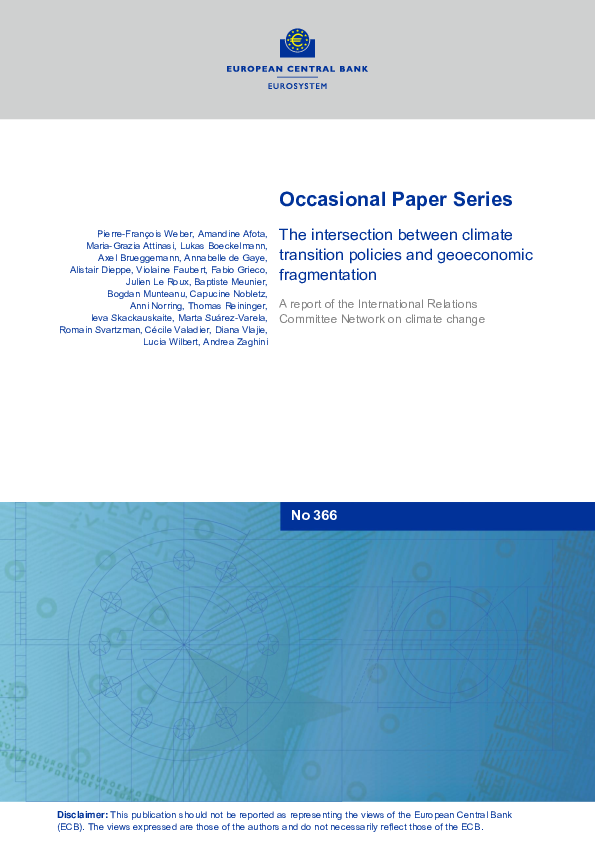The intersection between climate transition policies and geoeconomic fragmentation

Weber, Pierre-François ; et al.
ECB - Frankfurt am Main
2025
31 p.
climate change ; international relations ; sustainable development ; human rights ; structural change
Occasional Paper
366
Economic development
https://www.ecb.europa.eu/pub/pdf/scpops/ecb.op366~95975a2e13.en.pdf
English
Bibliogr.
"Two phenomena are increasingly reshaping the world economy. One is the growing and well-documented importance of climate transition policies that differ across countries. The other is the stark rise of geoeconomic fragmentation (GEF) concerns. While differences in climate transition policies are not new, they could amplify GEF, which is a new, growing risk. Conceptually, GEF is a policy-driven reversal of global economic integration, guided by strategic considerations such as national security, sovereignty, autonomy, or economic rivalry. It does not include reversals to global economic integration that are driven by autonomous change, such as shifts in technology, demographics or preferences, or policies motivated primarily by prudential or environmental concerns and labour or human rights. GEF propagates via all the channels through which countries engage with each other economically and politically to provide global public goods such as climate change mitigation. The steep rise in trade and investment restrictions points to coming headwinds which could be compounded by uncoordinated climate transition policies. Conversely, GEF could make transition policies more difficult as, together with their prerequisites – such as shared regulatory approaches, knowledge sharing and financial aid to less well-off countries – they hinge on effective cross-border coordination and collaboration. There is a considerable risk that GEF may hinder climate transition policies. The report is structured as follows. The first section sheds light on how climate policies may contribute to GEF. The second section analyses the extent to which GEF could hinder the green transition. The last section discusses gaps and avenues for further analytical and model-based work."
Digital
The ETUI is co-funded by the European Union. Views and opinions expressed are however those of the author(s) only and do not necessarily reflect those of the European Union or the ETUI.